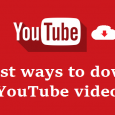A few days ago I saw someone saying:
“I am doing new media operations. I always think about the content framework when I write an article, but I don’t know what to write at the beginning and end. Sometimes, the article is finished, and it will not start at the beginning.”
When writing an article, this phenomenon is very common, just like many people are always hesitant about the title, do not know how to write. But the beginning and the end are crucial.
Instead of the user clicking on the title to enter your article, he will recognize your article seriously. There is no article at the beginning to arouse his desire to read, let him put his attention on the article, maybe your users ran early. Without writing the end, it may make your article abandon or even ruin.
So, how do you write the beginning and end of the public number article?
Here the old thief gives you some suggestions that will be available immediately. If you have an impression, you will find that many of the big V articles are written at the beginning and end.
Concentrated essence: You can briefly summarize the core points of the article, so that readers can anticipate in advance. For example, you can write the article content framework at the beginning to make reading and understanding easier for readers; you can also summarize the content of the full text, why do you know what you can get after reading it;
Fixed style: You can edit a unique opening based on your own public number, fixed style layout, long-term use. And each time just change the keywords of different themes, such as “Hello everyone, welcome to listen to your moon, my heart…”
Describe the pain points: you can throw out the pain points of the majority of readers, stimulate interest, and then give suggestions or solutions step by step. Such an article structure is basically in line with the SCQA structure proposed in the Principles of Pyramid;
Create suspense: You can create suspense, shape contrast, form conflicts, etc., and stimulate readers’ curiosity. This should be the most beginning form I have ever seen.
The famous quote of the verse: You can use the powerful verses or famous words to directly adjust the whole article, and immediately let the reader nod. However, the famous saying is easy to find, the golden sentence is hard to find.
Come to the bowl of chicken soup: similar to the golden sentence, chicken soup is also a very common method at the beginning of the article. Although readers are becoming more and more immune to chicken soup, you have to admit that good chicken soup is always more resonating and involved in emotions.
Tell a story: You can tell a little story at the beginning, and the people who tell the story never worry about not starting. It is still one of the most effective ways to attract readers to read, sometimes not even one.
Going to the point: you can still have something to say, and you can see the point of view. This method is still very suitable for the current era of fragmented reading, because it is not arrogant, nor circumvent, and there is a direct statement.
Introducing events: You can also turn your attention to the body content by describing a news, your own knowledge, or the latest events. This role in the beginning of the article is actually very similar to storytelling.
Tell a story: You can also write a general phenomenon, or a sudden phenomenon, or a phenomenon that many people have not discovered, associated with the text. The more insightful the phenomenon is, the more amazing it is.
OK, write the 10 suggestions at the beginning of the public article, and say this.
Let me talk about some of the writings at the end of the article:
To sum up the full text: You can briefly summarize the full text, and help the reader to finally clear the way of thinking and highlight the perceived value at the end of the article.
Emphasis on the point of view: You can re-emphasize the core view of the full text and sublimate the theme, so that users can firmly grasp your point.
Resonance of chicken soup: You can directly lick chicken soup, which is to impress the reader naked.
The famous saying of gold: You can make a golden sentence or quote a famous saying, and force you to improve immediately. This will also stimulate readers to share and quote into the circle of friends.
Topic interaction: It is also possible to throw an interactive topic and trigger discussion. It does not necessarily need to be related to the article, the focus is on the style.
Next notice : You can also make a notice of the next issue, and tie your readers. Keep an eye on it, the next issue is more exciting!
Throw the question: You can also throw a question related to the content of the article at the end of the text, or a new question, and give the answer in the next issue or in response to the keyword. Stay tuned, there are answers here!
Customary mantra: You can also edit a paragraph of your own style for long-term use. It can be the mantra of this number, it can be Slogan, or it can be a specially prepared paragraph…
Anyway, even if you really can’t think of a good ending, don’t use a bunch of irrelevant nonsense, even if you use a very personal END is better than the end.
Going back to the question at the beginning, the old thief thinks that you don’t think about the content framework but don’t know what to write at the beginning and end. It is precisely because you didn’t make the systematic idea of the article framework.
If you want to be clear, you will know exactly what the context of the article is and how you will advance in layers! You are like an architect. Your article is actually the building you want to build. Once you have made every step of the building clear, build a clear drawing, and the rest is to make it beautifully built.
At this time, you should not know what to write, but should be entangled in how to write better.
So, these suggestions come in handy!



